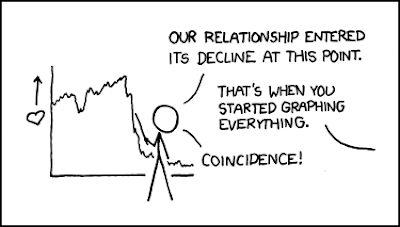| Costs | Revenues and Benefits |
| (What you give) | (What you get) |
| •Hard costs | •Normal benefits |
| ○Money | ○Money |
| ○Time | ○Insurance |
| ○Energy | •"Soft" benefits |
| •"Soft" Costs | ○Increased satisfaction |
| ○Sanity... | ○Social contribution... |
This is the final entry for Business Model You! Interestingly, the book has the least amount of content around these parts of the canvas.
The "Soft" parts of the above definition led me down a ridiculously long rabbit hole of research into soft-skills.
As part of a side project I'm working on involving "green staffing", soft-skills have come up over and over. As the research around this topic is pretty elaborate, I'm going to make this a two-part post. This week, I'm going to define soft-skills, and next week, I'll present my thoughts on why they are particularly important, and how to bring them to the table in business.
What are Soft Skills? <- Awesome link to the most comprehensive aggregation of information I've ever seen.
Investopedia.com and Wikipedia seem to agree, soft-skills are traits and interpersonal skills that characterize an individual's relationship with other people. Sociologists use the term EQ (Emotional Intelligence Quotient) in parallel with soft-skills.

The challenge with this definition is that "traits" and "interpersonal" skills feel ambiguous to many people; most people "get it" - they're just not sure what they're getting.
On the other hand, Hard Skills are easy to define. Here's Investopedia's definition.
In the blogosphere, Forbes, Fastco, Inc.com, etc. there's a lot of disagreement on what the critical soft skills in business are. Here's my bulleted takeaway:
I would argue that BGI empowers students by developing soft skills(as well as understanding the languages of the hard skills), and students need help presenting those soft skills as a "tangible" asset. The hard data and research is out there, I'll link to it next week as I dig through it - just as there is a "business case for sustainability", there's also a "business case for soft-skills".
I'd love some input for my content next week around soft-skills, please post your thoughts/questions! Thanks!
On the other hand, Hard Skills are easy to define. Here's Investopedia's definition.
Specific, teachable abilities that can be defined and measured. By contrast, soft skills are less tangible and harder to quantify... In business, hard skills most often refer to accounting and financial modeling.How amusing is it that the 2nd sentence in their definition names the challenge of soft-skills?
In the blogosphere, Forbes, Fastco, Inc.com, etc. there's a lot of disagreement on what the critical soft skills in business are. Here's my bulleted takeaway:
- Problem-Solving & Critical Thinking
- Adaptability
- Organizational Learning
- Creativity
- Communication
- Listening
- Presenting
- Story-telling
- People Management
- Conflict Management
- Leadership
- Teamwork
- Self-Management
- Emotional Awareness & Control
- Resilience
- Confidence
- Professionalism
I'd love some input for my content next week around soft-skills, please post your thoughts/questions! Thanks!





